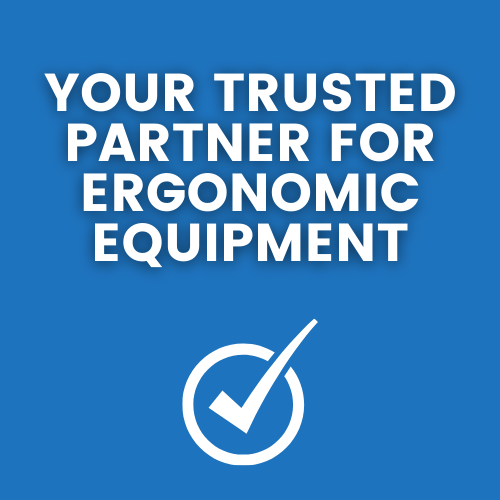In the modern office environment, where many employees spend hours seated at desks working on computers, it’s easy to overlook the long-term effects of poor posture, awkward workstations, or inappropriate equipment. Over time, these factors can lead to discomfort, pain, and even serious musculoskeletal issues. This is where office ergonomic assessments come into play.
Let’s explore what an ergonomic assessment entails, when it’s needed, the benefits, what to expect, and who performs them.
What is an Office Ergonomic Assessment?
An office ergonomic assessment is a thorough evaluation of an employee’s workstation to ensure that it is optimally designed to fit their body, work habits, and specific tasks. The goal is to reduce the risk of injury and discomfort by identifying and correcting ergonomic hazards.
During an assessment, the assessor evaluates everything from the height of the desk and monitor, the placement of the keyboard and mouse, to the type of chair being used. This comprehensive review ensures that employees have a setup that promotes good posture, reduces strain, and minimises the risk of work-related injuries.
When are Ergonomic Assessments Needed?
There are several scenarios where an office ergonomic assessment becomes essential:
-
New Employees or Office Setup
When a new employee joins, or a new office is set up, an ergonomic assessment can ensure that the workstation is set up correctly from the start, preventing future discomfort or injury. -
Post-Injury Return to Work
If an employee is returning to work after an injury, particularly one related to musculoskeletal issues, an ergonomic assessment is crucial to ensure the environment supports their recovery and prevents re-injury. -
Employee Discomfort or Injury
If employees report discomfort, pain, or repetitive strain injuries, an assessment can identify the cause and provide solutions, such as adjustments to seating, equipment, or work habits. -
Proactive Health and Safety Measures
Regular ergonomic assessments should be part of a proactive health and safety policy. Periodically reviewing workstations, especially with changes in tasks or technology, helps prevent issues before they arise.
The Benefits of Ergonomic Assessments
-
Reduced Risk of Injury
One of the primary benefits of ergonomic assessments is the prevention of musculoskeletal disorders, such as back pain, neck strain, or carpal tunnel syndrome. Proper workstation adjustments can significantly reduce these risks. -
Increased Comfort and Productivity
A well-designed workspace leads to greater comfort, which in turn boosts employee focus and productivity. By eliminating sources of discomfort, employees can work more efficiently and with less distraction. -
Improved Employee Well-being
Beyond physical benefits, ergonomic assessments contribute to mental well-being. Employees who feel comfortable and supported in their workspace are likely to experience lower stress levels and higher job satisfaction. -
Reduced Absenteeism
By addressing potential ergonomic issues early on, companies can reduce the incidence of work-related injuries that lead to absenteeism. Healthy employees are more likely to be present and engaged at work. -
Tailored Recommendations
Ergonomic assessments provide customised solutions tailored to the individual. This personalised approach ensures that each employee’s unique needs are met, from adjusting their chair to recommending specialised equipment like ergonomic keyboards or mice.
What to Expect During an Ergonomic Assessment
An ergonomic assessment typically involves the following steps:
-
Initial Consultation and Observation
The assessor will meet with the employee to discuss any concerns, pain points, or issues they’ve experienced. This is followed by a period of observation to understand how the employee interacts with their workstation throughout the day. -
Workstation Evaluation
The assessor will examine the setup of the employee’s desk, chair, monitor, keyboard, mouse, and any other tools they use regularly. They will check for proper alignment, height, and positioning based on ergonomic standards. -
Recommendations and Adjustments
After the evaluation, the assessor will make recommendations for adjustments. This could include adjusting the height of the chair, repositioning the monitor, or suggesting the use of ergonomic equipment such as a split keyboard or vertical mouse. -
Training and Education
As part of the process, employees may receive education on proper posture, the importance of regular breaks, and exercises to reduce strain. This empowers them to maintain good ergonomic practices even after the assessment. -
Follow-Up and Ongoing Support
In some cases, a follow-up assessment may be necessary to ensure that the adjustments are effective and that no new issues have arisen.
Who Performs Ergonomic Assessments?
Ergonomic assessments are typically conducted by trained professionals such as occupational therapists or ergonomists. These experts have the skills and knowledge to assess the physical and environmental factors that contribute to discomfort or injury. They are equipped to provide practical solutions, from simple workstation adjustments to recommending specialised ergonomic products.
For recommendations on reputable organisations who perform ergonomic assessments, visit this page.
Ready to Improve Comfort and Productivity?
Don’t wait until discomfort becomes an injury. Contact No More Pain Ergonomics today to schedule an office ergonomic assessment and take the first step towards a healthier, more comfortable workplace.
















← Older Post Newer Post →
0 comments
Get in Touch
Still have a question or simply want to discuss what ergonomic products are best suited? Get in touch, our expert team is available to provide free advice and support.